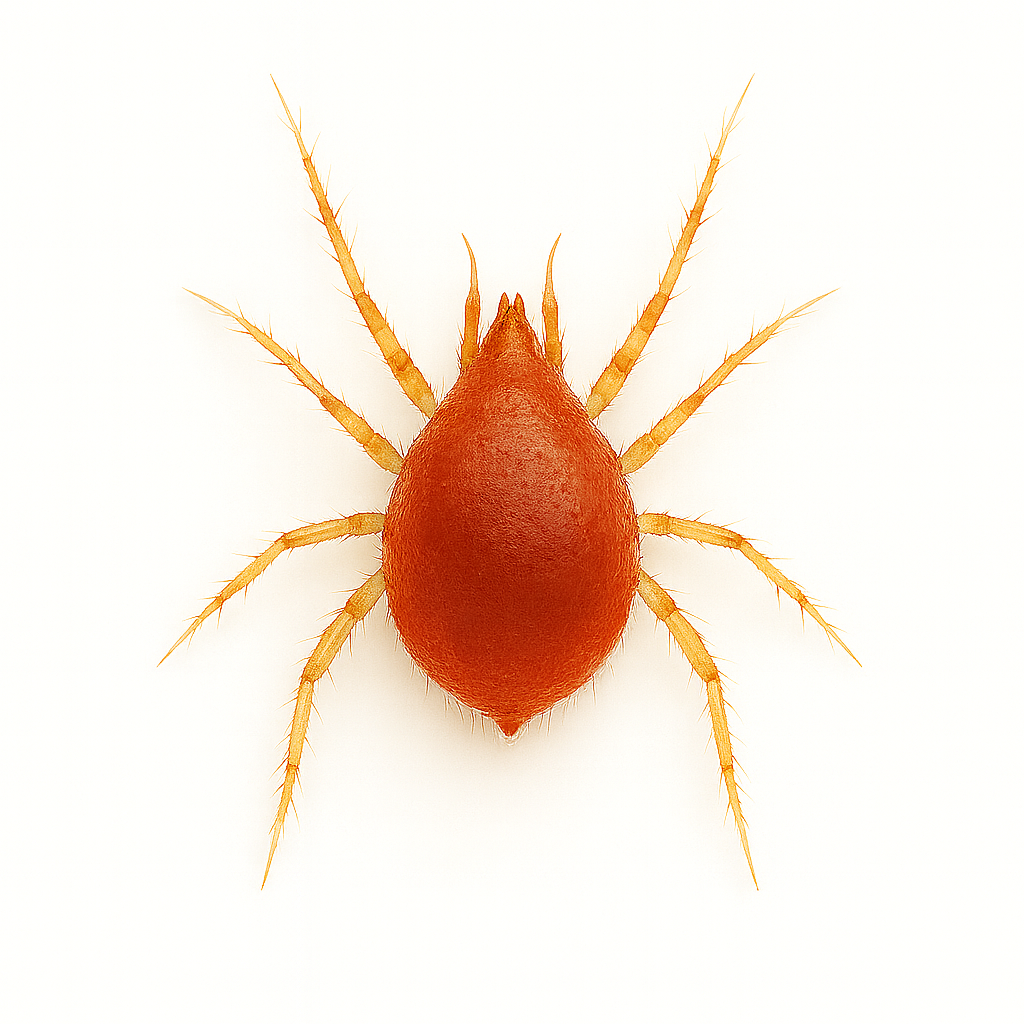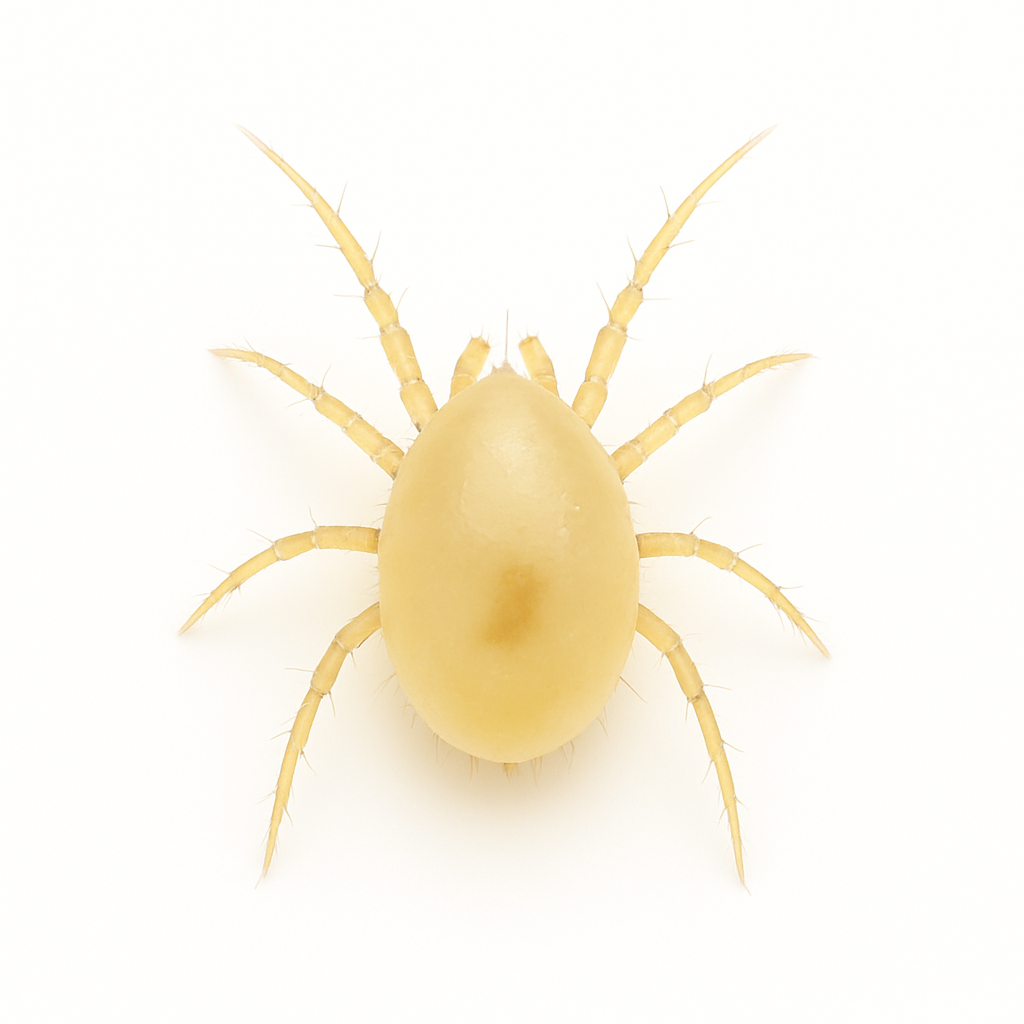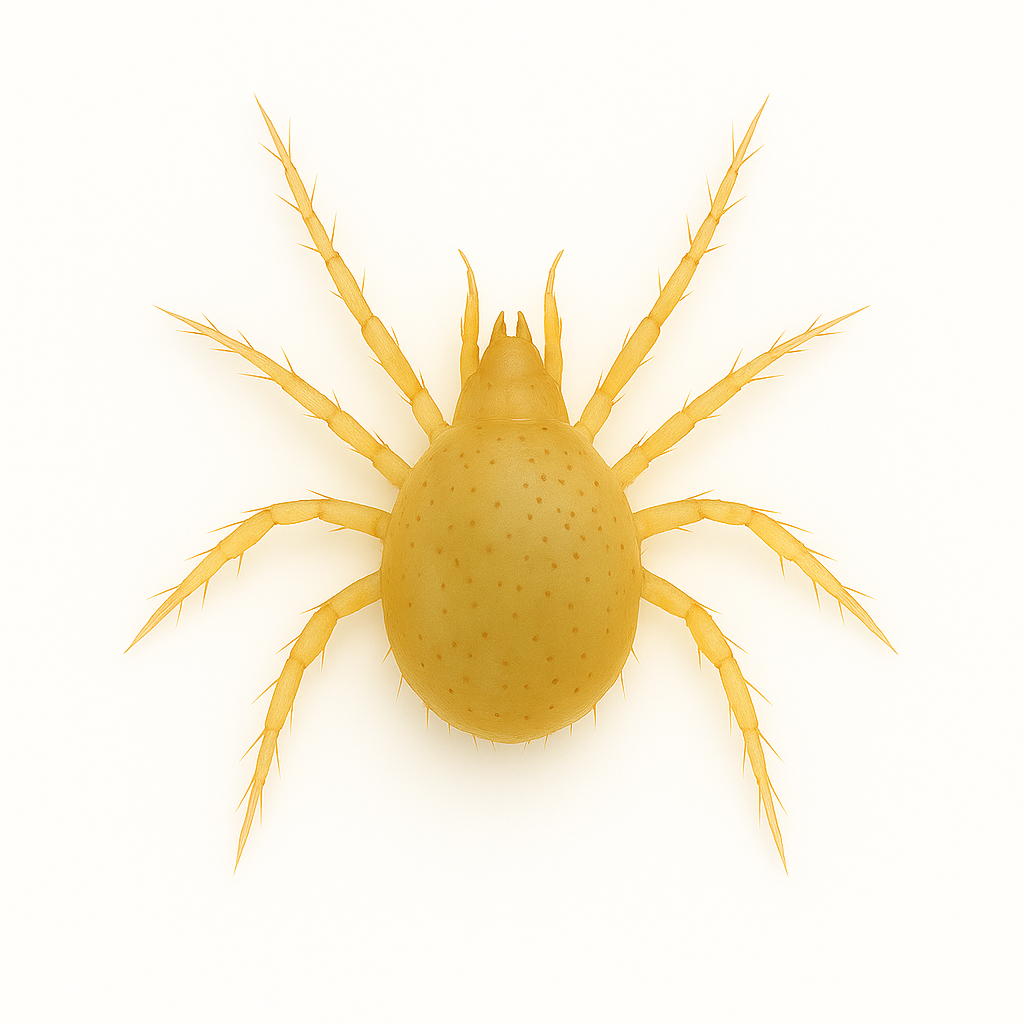Predators over Pesticides for Spider Mites?
Spider mites multiply fast and slip into hidden spots where sprays can’t reach. Predatory mites patrol every leaf surface, hunting them down until the infestation collapses. Instead of a quick chemical knockback, they build a living defense that adapts and keeps protecting your plants.
Built for Outbreaks
Release them once and they get to work immediately — no mixing, no reapplication, no residue.
Go Where Sprays Can’t
Predatory mites crawl into webbing, leaf undersides, and dense foliage to reach the hidden hotspots.
Trusted by Growers
Phytoseiulus persimilis has been used in professional greenhouses for decades to collapse spider mite infestations quickly and cleanly.
Did You Know?
Predatory mites, on average, are only 0.5 mm. About the size of a grain of sand.
The Main Players
persimilis
Thrives in warm, humid conditions and shows the fastest results when spider mites are already present. Studies in greenhouse crops have consistently shown Phytoseiulus persimilis outperforming chemical sprays because it directly targets spider mites without harming plants or beneficial insects.
californicus
Well-suited to hot, dry conditions and able to persist for weeks even when prey is scarce. Research highlights that Neoseiulus californicus provides steadier long-term control than pesticides, which can create resistant spider mite populations after repeated use.




